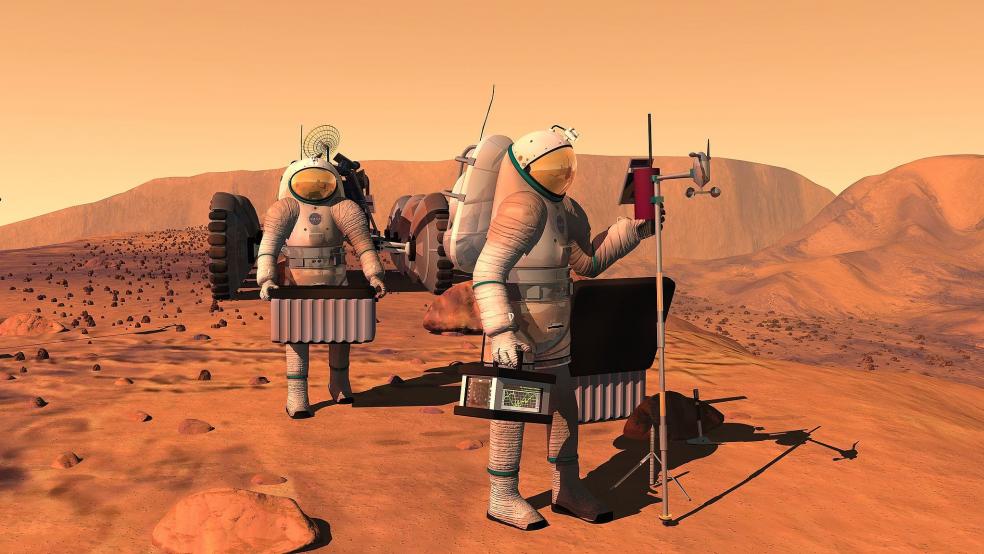In September 2016, tech mogul Elon Musk walked onto a stage in Guadalajara, Mexico, and laid out his vision to colonize Mars with his company SpaceX.
The talk was bold for a couple of reasons. First, the plan itself is ambitious — Musk hopes to fly a million people to the red planet as a sort of "backup drive" for Earth at cost of $100,000 to $200,000 per person. Second, he delivered the presentation only weeks after a SpaceX rocket blew up on a launchpad.
Related: Pizza on Mars: Elon Musk's Plan to Colonize the Red Planet
Now Musk has authored a new paper that outlines the most recent version of his Mars vision.
Published in the June issue of the academic journal New Space, the article appears to be an edited summary of Musk's September talk. (A full transcript of that, along with Musk's slide deck, is available here.) In the text, Musk describes his argument for reusing rockets as a way to reduce the cost of spaceflight 1,000-fold. The paper also includes descriptions of early designs of the enormous spacecraft he hopes to build.
Although the recent publication does not present too many new details, several important events have happened since Musk's original presentation.
For one, Musk further elaborated on his Mars plans during an October 2016 "Ask Me Anything" session on Reddit. He outlined a four-stage process to inhabit Mars, noted how he'd create fuel and air on the planet, and also revealed his name for the main spaceship: "Heart of Gold" (a nod to the book "Hitchhiker's Guide to the Galaxy").
Related: Mars Isn't the Only Place in Our Solar System that Can Sustain Life
In the speech, Musk also revealed the existence of a giant fuel tank for his Mars spaceship. That colossal tank, which is made entirely out of carbon fiber, passed a big pressure test in November 2016, according to Musk.
Additionally, the investigation into the uncrewed Falcon 9 rocket, which exploded on a launch pad in Cape Canaveral, Florida, closed in January 2017, and SpaceX resumed launching rockets the same month.
SpaceX is also ramping up its hiring. It had 473 open positions as of March 2017 (and 487 at the time of this posting), and many of the positions are dedicated to the company's Mars exploration efforts.
And most recently, Musk's company is gearing up to launch its biggest launch system ever: Falcon Heavy. In a tweet on June 8, the SpaceX CEO revealed that the first super-heavy-lift rocket could take off as soon as September 2017.
If all goes according to plan, the Falcon heavy could whisk two paying customers around the moon in 2018.
This article originally appeared on Business Insider. Read more from Business Insider:
Here's how long investigations like the one into Trump and Russia usually last
Snap sinks to its IPO price (SNAP)
Super-rich millennials are defying the way their parents have been investing for decades




